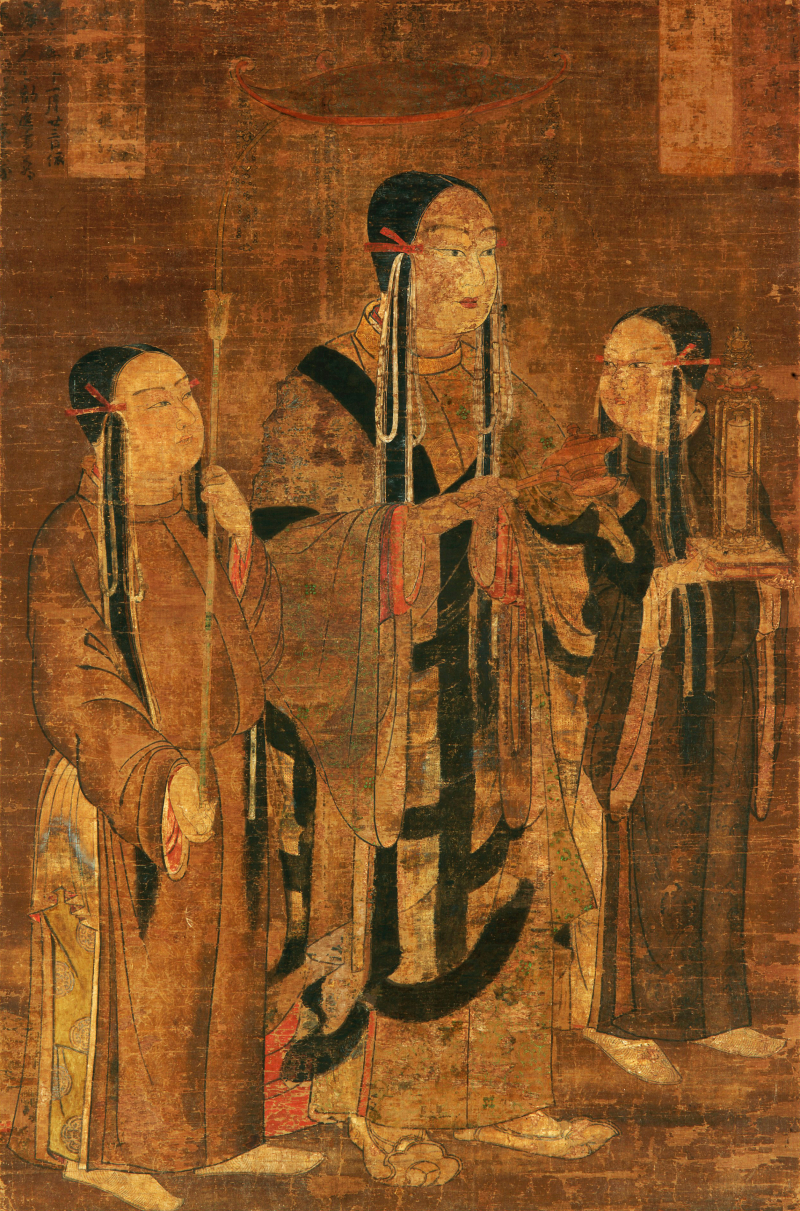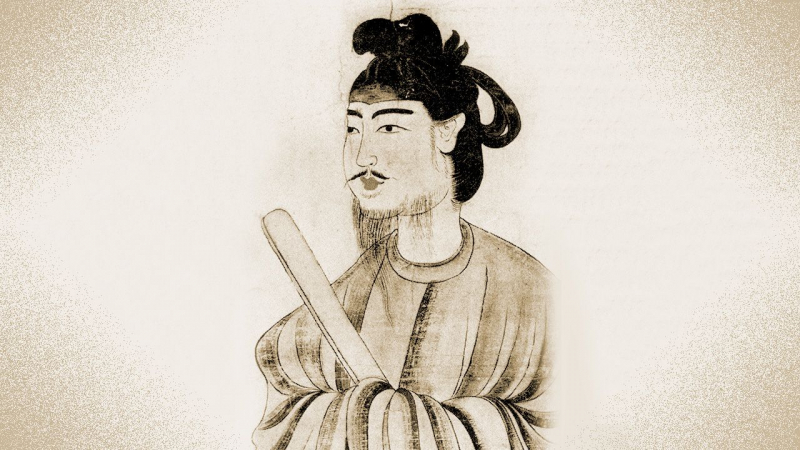Prince Shotoku
Prince Shōtoku (聖徳太子, Shōtoku Taishi, February 7, 574 - April 8, 622), also known as Prince Umayado (厩戸皇子, Umayado no ōjî) or Prince Kamitsumiya (上宮皇子, Kamitsumiya no ōji) , was a semi-legendary regent and politician in Japan during the Asuka period. He was Emperor Yōmei's son and his consort, Princess Anahobe no Hashihito, who was also Yōmei's younger half-sister. His parents were Soga clan relatives, and he was also involved in the defeat of the rival Mononobe clan. The Nihon Shoki is the primary source for Prince Shōtoku's life and achievements. The Prince is well-known in Japan for modernizing government administration and promoting Buddhism.
A devotional cult arose around the figure of Prince Shōtoku for the protection of Japan, the Imperial Family, and Buddhism over successive generations. Key religious figures such as Saichō, Shinran, and others claimed to have received inspiration or visions from Prince Shōtoku.
According to legend, when Bodhidharma visited Japan, he disguised himself as a starving beggar and met Prince Shōtoku. The Prince requested that the beggar identify himself, but the man did not respond. Instead of proceeding, Shōtoku gave him food and drink and wrapped him in his purple robe, telling him to "lie in peace." Shōtoku then sang for the hungry man:
"Alas! For
The wayfarer lying
And hungered for rice
On the hill of Kataoka
(The sunshiny)
Art thou become
Parentless?
Hast thou no lord
Flourishing as a bamboo?
Alas! For
The wayfarer lying
And hungered for rice!"
Shōtoku sent a messenger to the starving man the next day, but he was already dead. He was deeply saddened by this and ordered his burial. Shōtoku later realized the man was no ordinary man and sent another messenger to discover the earth had not been disturbed. When the tomb was opened, there was no body inside, and the Prince's purple robe lay folded on the coffin. The Prince then dispatched another messenger to retrieve the garment, which he continued to wear as before. Awestruck, the people praised the Prince, saying, "How true it is that a sage knoweth a sage". This legend is associated with the Daruma-dera temple in Ōji, Nara, where a stone stupa was discovered underground, which is extremely rare.












